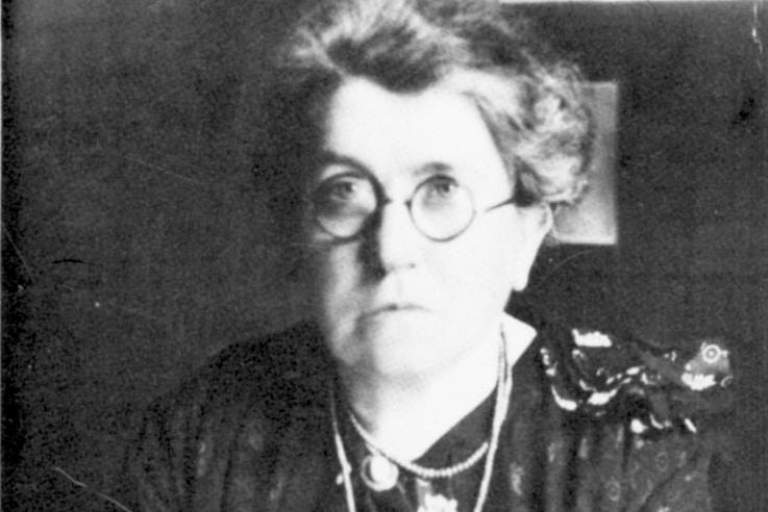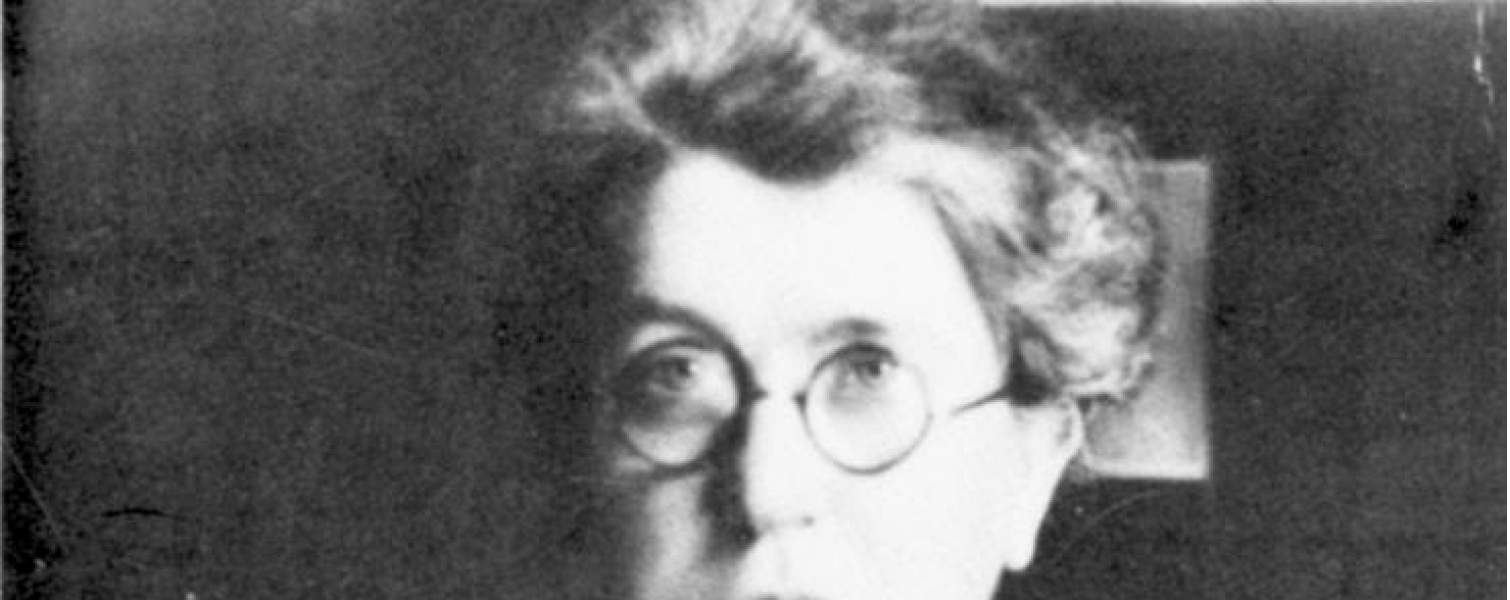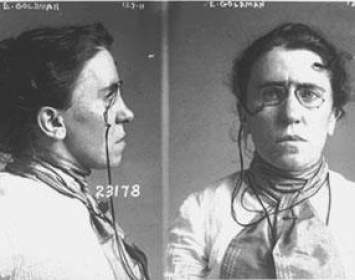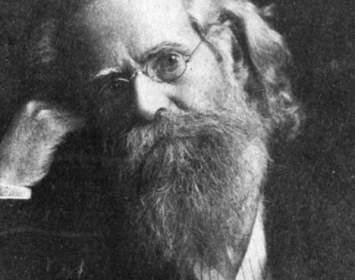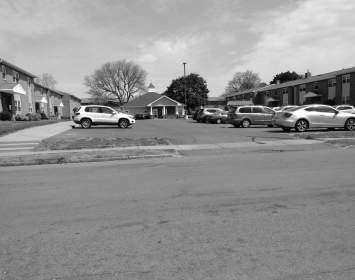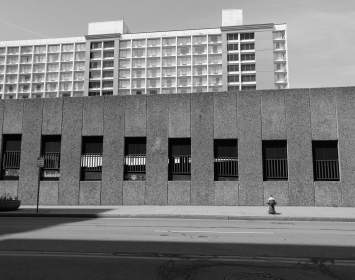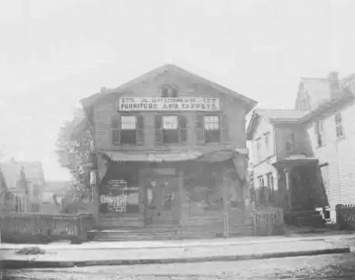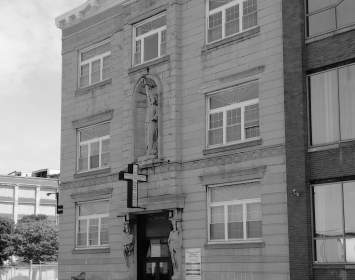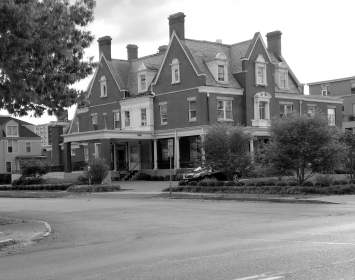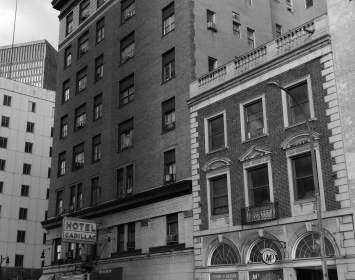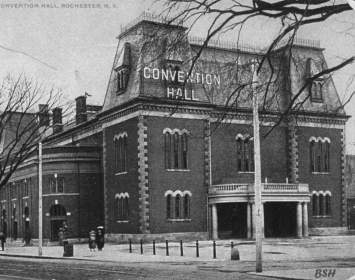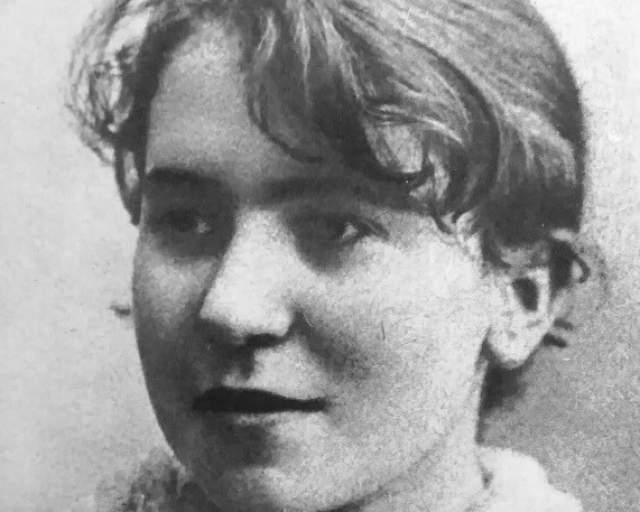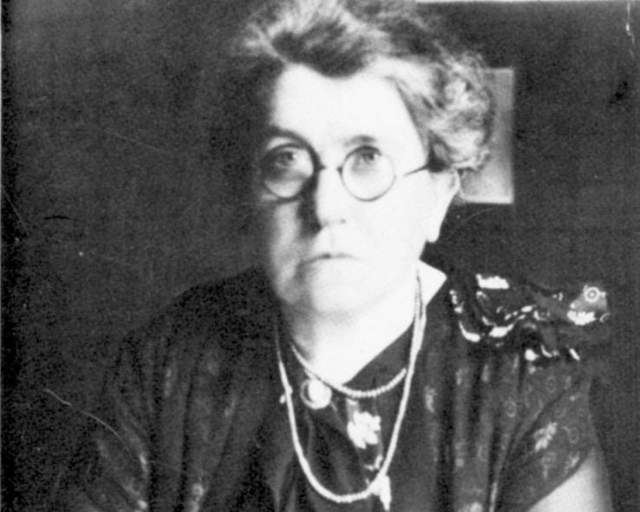
Emma Goldman (1869–1940) was a fiery activist, writer, and speaker whose major causes included anarchy, free speech, sex reform, and woman’s rights (nineteenth-century practice was to use the singular, woman's, when referring to women as a class; later practice was to use the plural, women's). Goldman was often persecuted or jailed for her speeches and writings, making her a heroine to defenders of free speech and freethought.
Truth be told, authorities could not be blamed for thinking Goldman dangerous; one of her lovers, the anarchist Alexander Berkman, seriously wounded industrialist Henry Clay Frick in an 1892 assassination attempt rooted in labor grievances. Eventually (and owing in part to her opposition to American involvement in World War I), Goldman was deported to her native Russia after the Bolshevik/Communist Revolution of 1917. Disillusioned, she left Russia in December 1921. She lived in various locations across Europe, twice visiting Spain's short-lived anarchist communities during the Spanish Civil War, then emigrating to Canada in 1939. There she suffered two debilitating strokes. She died in Toronto, Ontario, on May 14, 1940.
Emma Goldman’s radical ideas were often referenced by Roger Nash Baldwin, a founder of what became the American Civil Liberties Union.
Goldman in Rochester. Goldman’s ties to west-central New York State are ironic; leaving the area was the first necessary step toward her tempestuous career. A young Russian immigrant, she had come to Rochester in 1886 at age seventeen to live with her sister Lena. She worked in two successive garment factories that she viewed as sweatshops. Her parents moved to Rochester, and she moved in with them. Then she entered what turned out to be a loveless marriage. She experienced her political awakening when she heard about Chicago’s May 4, 1886, Haymarket tragedy. Attending lectures at two Rochester workers' halls and reading as widely as she could, she formed her anarchist ideals. In 1889, she left her husband—and Rochester—to move to New York City and embark on her career as a radical.
By the turn of the twentieth century, Emma Goldman was a prominent and controversial radical. She often returned to Rochester, speaking before its largely German-speaking radical community and visiting with family members.
- January 1890: Addressed German workers at Germania Hall about the eight-hour work day.
- July-August 1901: Goldman spent a month with her sister and visited the Pan-American Exposition in nearby Buffalo.
- January 1904: Brief lecture tour before garment workers in Rochester (venue unknown) and miners in Pennsylvania.
- July 7, 1905: Spoke to Italian, German, and Polish laborers at Germania Hall.
- March 1906: National lecture tour with speaking engagements scheduled in Cleveland, Toronto, Rochester (venue unknown), Syracuse, and Utica. (An engagement in Buffalo was disrupted by local authorities.)
- March 1909: Returned to Rochester in connection with a court action in Buffalo that would invalidate the citizenship of her ex-husband, her claim to U.S. citizenship.
- January 6, 1911: Began a six-month lecture tour in Rochester with an address on Tolstoy at Germania Hall. She would travel to fifty cities in eighteen states, taking part in over 150 lectures and debates.
- December 20, 1914: Delivered an anti-war lecture to an audience of 1,800 at Rochester's Victoria Theater.
- December 21, 1914: Addressed another capacity crowd (albeit in a smaller venue, the Labor Lyceum) urging women to launch a "birth strike" to protest against American involvement in World War I.
- November-December 1916: Lectured in Chicago, Milwaukee, Ann Arbor, Detroit, Cleveland, and Rochester. Subjects included Russian literature, education, birth control, and anarchism. At her Rochester lecture on December 15 (at the Fine Arts Building's Recital Hall), an associate was arrested for distributing birth-control literature. Two days earlier, at the posh Century Club, she gave a more restrained lecture on the writings of Tolstoy. On three successive evenings she lectured on anarchism and sex radicalism at the Labor Lyceum.
- January 1918: Prior to being imprisoned, Goldman delivered her final lectures in Chicago, Detroit, and Rochester.
- September 27, 1919: Out on bail and facing deportation, Goldman visited family in Rochester.
- February 1, 1934: Allowed back in the U.S. by President Franklin Roosevelt after fifteen years of deportation and self-exile, Goldman visited Rochester at the start of a multi-city lecture tour. She spoke at the Powers Hotel on March 17 and at Convention Hall on April 15.
For more information on Emma Goldman, see The Emma Goldman Papers.
Thanks to Christopher Philippo, Barry Pateman, and Fred Whitehead for research assistance.
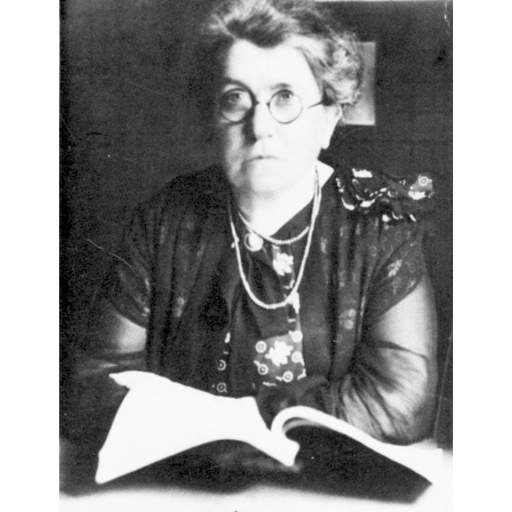
Emma Goldman
Anarchist Emma Goldman.
Associated Historical Events
Emma Goldman's Rochester Years
January 1886–August 1889
Emma Goldman Delivers First Rochester Lecture
January 1890
Emma Goldman Addresses Rochester Garment Workers
July 7, 1905
Emma Goldman Speaks on 'Tolstoy, Artist and Anarchist'
January 6, 1911
Emma Goldman Speaks on 'The War'
December 20, 1914
Emma Goldman Speaks on 'The Birth Strike'
December 21, 1914
Emma Goldman Speaks on 'Tolstoy'
December 13, 1916
Emma Goldman Speaks on Ibsen's Drama
December 14, 1916
Emma Goldman Speaks on Strindberg's Drama
December 15, 1916
Emma Goldman Speaks on 'Anarchism and Human Nature'
December 17, 1916
Emma Goldman Speaks on 'Free or Forced Motherhood'
December 19, 1916
Emma in Rochester During 1934 Lecture Tour
February 1–April 15, 1934
